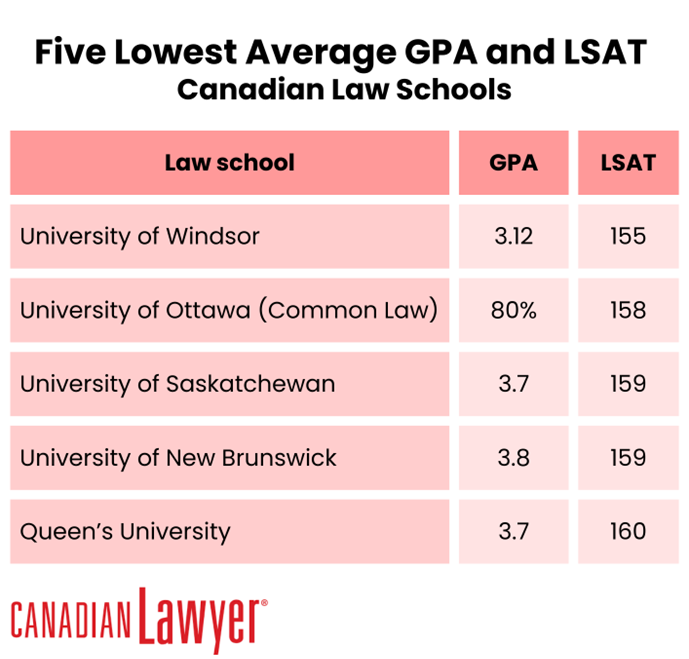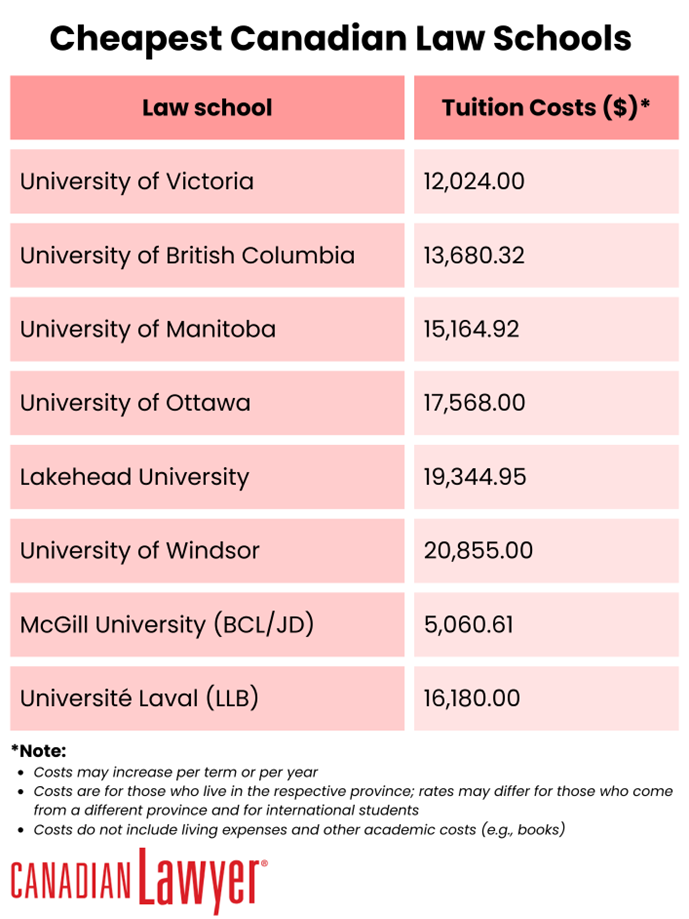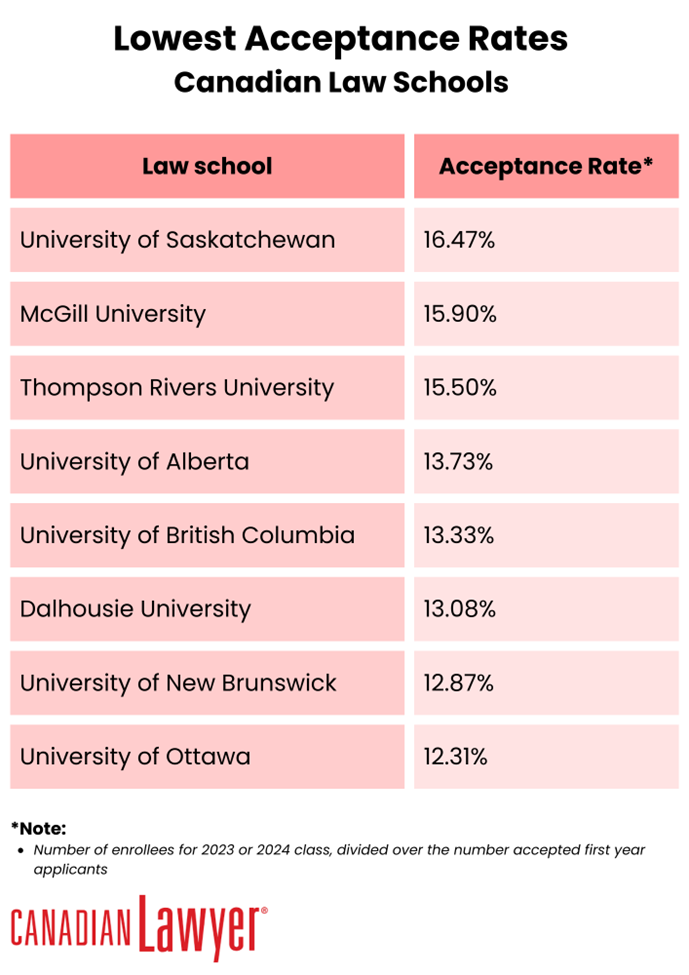
Know more about the easiest law schools to get into in Canada, the factors that come into play, and some caveats to consider

There is nothing easy in law school; if someone tells you otherwise, don’t believe them. But when it comes to the easiest law schools to get into, we can spare some discussions and see which school has a relatively easier admissions process compared to others.
This guide can be used by future law students in deciding whether to study law and where to apply. This can also be used by lawyers when referring resources to future students.
Before we discuss the specific Canadian law schools that are easy to get into, we need to first know what does “easiest” mean in law school admissions. Of course, what is easy for each person would depend on their case; what is simple for me may not be for you. However, to know which law school is the perfect fit, we can look at these law schools according to some factors versus their actual data.
Here are some of the factors to consider when you’re looking for the easiest law schools to get into:
You may also want to consider how each of these factors influence each other when a law school considers your application for admission. For instance, the GPA and the LSAT are usually viewed in tandem. See how it works with this video:
We compiled a comprehensive list of the Canadian law schools that can also help you decide what are the easiest law schools to get into. This list includes important details, such as tuition rates and specific programs they offer.
Generally, you would need a GPA above 3.7 or 80% to successfully enter a Canadian law school. With a high LSAT score and other requirements, it may secure your spot to your preferred law school.
LSAT is a test administered by the Law School Admission Council (LSAC), which is offered nine times a year. It can be taken either on-site or online, with a possible score ranging from 120 to 180. As for the LSAT score, most law schools in Canada would mark the score of 160 and above to be good enough. Again, your LSAT score will be considered together with your GPA and other documentary submissions.
Looking at these figures, you might think that that’s a lot or it’s too high — and it sure is. Canadian law schools set these scores to guide future students on their standards for admissions. However, how a law school treats your GPA and LSAT may differ in other ways:
These make some law schools easier to get into, compared to others. Here are some of the law schools to have low GPA and LSAT requirements:

Note that the figures above are not the specific or recommended GPA or LSAT of these law schools. All law schools in Canada follow a holistic approach in reviewing your admissions; this means that all aspects of your application are properly considered. As such, these data are just based on their successful first year applicants and are not really their fixed GPA or LSAT for admissions.
Another factor in ranking the easiest law schools to get into in Canada is by looking at the admission pathways or categories it offers. This is also a reflection of this holistic approach that the law schools tend to incline with when sifting through hundreds or even thousands of applicants.
The common admission pathway to be admitted to a law school is called the general admission. Here, the usual requirements to enter a law school are applicable, such as:
If you fall under an exceptional case, or if you don’t fall under the general admission or category, then you can still apply for a law school under their alternative pathways. These would depend on every law school, since they are not always offered. In any case, here are the possible alternative pathways that you can choose from:
By offering these alternative pathways, law schools aim to diversify their student population. Classes also become more grounded in realities, since different voices and perspectives are heard during discussions and when applied to law. Regardless of your low numbers, if you’re a member of any of these communities and minority groups, it’s highly encouraged that you still apply in a law school that offers an alternative category that fits you.
Even if you got what it takes to be a lawyer, but do not have the right resources, passing the bar would still be difficult. This is why another consideration if a law school is good and is easy to get into is when it has a reasonable tuition fee. While law school is undeniably expensive, there are some law schools in Canada that are more affordable compared to others.
As discussed in our article on the 10 cheapest Canadian law schools, here’s a summary of the easiest law schools to get into based on their tuition costs:

If you want to skip all the above-mentioned factors, you may want to see directly a law school’s admission rates. This is usually measured by dividing the total number of applicants in a year and the number of applicants who are actually admitted. In doing so, the other factors, such as GPA and LSAT, are already considered by these numbers.
Simply, a higher admission rate means that the law school has accepted a lot of applicants and can be considered as a law school that is easy to get into. Then, it’s the other way around if it has a low admission rate.
However, take note that these numbers reflect a more generalized population of applicants and actual admissions. As such, everyone is still encouraged to apply to the law school of their choice regardless of a law school’s admission rates.
Here’s a comparative table of the highest admission rates among the several law schools in Canada:

Compare all these rates to University of Toronto – Faculty of Law, which only has an 8.90% acceptance rate because of its high standards for LSAT and GPA. As such, it’s one of the law schools with a rigorous admission process. Here’s a vlog that can generally show you the high stakes involved to be admitted to U of T’s Faculty of Law:
If you want to know more about these factors when applying to a law school, check out this article on the most important and common Canadian law schools' requirements.
However, a high acceptance rate doesn’t mean that it’s one of the easiest law schools to get into. As to some law schools, using admission rates to measure the difficulty level of their admission process may not be accurate. For example:
This is why it's better to also take a holistic approach (just as they do when they evaluate yours) when evaluating law schools according to their admission process. While numbers are great indicators, going beyond them would still be advantageous.
Considering all the factors we’ve discussed above, here’s a short list of the top 5 Canadian law schools that have an overall easier admissions process (in alphabetical order):
Ranking what are the easiest law schools to get into may help you when you’re still undecided on where to study law. However, there are many factors that you must consider in deciding where you’ll be spending three to four years of your lives studying law. Still, don’t take an “easy” law school lightly, since their admissions process can be just as stringent as the other “top” law schools. While admission criteria may be crucial, finding a law school that fits your goals and aspirations is equally important to become successful as a future lawyer.
Be updated on our latest resources about law schools, aside from the easiest law schools to get into, by bookmarking our Legal education page.